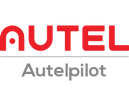The application of drones in the field of hydrological and environmental engineering is developing rapidly. Advanced industrial drones are becoming a game changer in the field of hydraulic engineering, providing unparalleled advantages in data collection, monitoring and analysis.
In this blog, we will explore how advanced industrial drones are changing hydraulic engineering and their potential to completely change the way we deal with water management, from flood modeling to dam inspections, fully enhancing the safety and sustainability of hydraulic infrastructure projects.
What Are Advanced Industrial Drones?
Advanced industrial drones are sophisticated unmanned aerial vehicles (UAVs) equipped with high-end sensors, cameras, and imaging technology. Unlike consumer drones, these UAVs are designed to meet the specific needs of industries such as construction, agriculture, and, of course, hydraulic engineering. These drones can carry multi-sensor payloads, including:
- LiDAR (Light Detection and Ranging): Provides highly accurate 3D mapping of terrain, essential for topographical surveys and floodplain modeling.
- Thermal and Infrared Cameras: Used for detecting heat variations, which are particularly useful in monitoring water temperature, flow rates, and even infrastructure integrity.
- RGB Cameras: Capture high-definition images for visual inspections, GIS mapping, and environmental monitoring.
- Multispectral Sensors: Monitor vegetation health and soil moisture, which is crucial in assessing the impacts of water management on surrounding ecosystems.
- Gas Sensors: For detecting hazardous emissions or methane leaks, which can occur in certain hydraulic engineering scenarios.
- These drones are often equipped with advanced autonomy features, such as GPS, AI-based path planning, and real-time data transmission, making them suitable for a wide range of industrial applications, including hydraulic engineering.

Autel Robotics provides advanced industrial drones to industry leaders: EVO MAX series, Autel Alpha, Autel Titan. These high-quality commercial drones have powerful functions, high-definition multi-sensor cameras, multiple payloads, as well as leading networking technology and anti-interference capabilities.
Key Applications of Drones in Hydraulic Engineering
1. Dam Inspection and Monitoring

Dams are critical infrastructure for water management, flood control, and energy generation. Ensuring their safety and structural integrity is paramount. Traditional dam inspections often require costly scaffolding, divers, or helicopter surveys, all of which can be risky, expensive, and time-consuming. Industrial drones are now being used for routine dam inspections, providing several advantages:
- Visual Inspection: Drones equipped with high-definition cameras or thermal sensors can quickly capture images and videos of the dam's surface, looking for cracks, leaks, or signs of erosion. Thermal cameras are particularly effective in detecting water leakage or dampness on structures that would otherwise go unnoticed.
- High-Resolution LiDAR: LiDAR sensors provide precise, 3D models of the dam, which can be used to detect any deformations or irregularities in the structure. These models are invaluable for planning maintenance and identifying potential risks.
- Real-Time Monitoring: Drones can be deployed on a regular basis to monitor the dam's health, ensuring continuous oversight without the need for human presence in potentially hazardous environments.
2. Flood Risk Assessment and Floodplain Modeling

Accurate flood risk assessment and floodplain modeling are crucial in hydraulic engineering, especially for areas prone to heavy rainfall or rising water levels. Drones are increasingly being used to enhance flood modeling and improve flood management strategies:
- Topographic Mapping: LiDAR-equipped drones are perfect for creating highly accurate topographic maps of riverbeds, floodplains, and surrounding areas. This detailed information is essential for creating flood models and assessing flood risks.
- Real-Time Data Collection: Drones can quickly gather data after a flood event, providing an aerial view of the affected areas. This can be used to assess damage, evaluate the effectiveness of flood control infrastructure, and improve future flood prevention plans.
- Monitoring Water Flow and Erosion: Drones can be used to monitor water flow in real-time, tracking changes in river channels, dams, or levees, which is vital for flood control and erosion management. They can also assess the stability of riverbanks or levees after a flood event.
Read More: How Drone Are Used in Flood Rescue and Relief Efforts
3. Water Quality Monitoring

Maintaining water quality in lakes, rivers, and reservoirs is a major concern in hydraulic engineering. Poor water quality can affect both the environment and human populations. Drones equipped with sensors for detecting turbidity, temperature, and even chemical pollutants are becoming key tools for water quality monitoring:
- Aerial Sampling: Drones can capture water samples from hard-to-reach locations, such as remote reservoirs or dangerous flood zones. With the right sensors, drones can measure parameters such as dissolved oxygen, pH levels, and contaminants.
- Monitoring Pollution: Drones can detect waterborne pollutants, including oil spills, harmful algae blooms, or wastewater discharges. By continuously monitoring water bodies, drones provide early warnings and help authorities take timely action to mitigate pollution.
- Efficient Sampling: Traditional methods of sampling water bodies are labor-intensive and require multiple trips to different locations. Drone water quality sampling can be performed quickly, at scale, and with little to no human intervention.
4. Reservoir and Canal Monitoring

Industrial drones are also being used for reservoir and canal monitoring, providing valuable insights into water storage and distribution systems. Here’s how they contribute:
- Inspection of Structures: Drones can fly over reservoirs, canals, and other water distribution structures to inspect for signs of wear and tear, leaks, or blockages that could lead to inefficiency or failure.
- Monitoring Water Levels: Drones can be used to capture images of water levels in real-time, enabling engineers to monitor reservoir and canal conditions from a safe distance and respond quickly to any issues.
- Sedimentation Studies: Over time, sediment can accumulate in reservoirs and canals, reducing their capacity and affecting water flow. Drones equipped with LiDAR sensors can create detailed sedimentation maps, helping engineers understand the extent of the problem and plan for cleaning or dredging operations.
5. Hydroelectric Power Generation

Hydropower projects rely on complex systems of dams, turbines, and water flow management. Drones can be used in the design, construction, and maintenance phases of hydropower plants:
- Site Surveys: Drones can quickly survey vast areas, providing critical data for planning and designing hydropower infrastructure.
- Turbine Inspections: Drones equipped with thermal imaging and high-resolution cameras can inspect the turbines for overheating or mechanical issues, ensuring the plant runs efficiently.
- Structural Monitoring: Drones can monitor the structural integrity of dams, powerhouses, and other infrastructure, reducing the need for expensive and hazardous manual inspections.
6. Soil and Water Conservation

In water conservancy projects, soil inspection is always necessary when checking the water quality of water sources. The results of soil inspection can reflect the health of local water quality to a certain extent. Drones play an increasingly important role in soil and water conservation inspections.
Drones have a wide coverage, high precision and high efficiency. Through aerial imaging and artificial intelligence technology, drones can assess conservation status, identify problems and make suggestions for improvement, which is a cost-effective solution.
- Drones can easily traverse difficult terrain and effectively cover large areas.
- Drone inspections are faster, which can greatly reduce time and labor costs.
- Drone inspections provide precise data and minimize the risk of human error.
- Drone inspections are non-invasive and can reduce the impact on the natural environment.
- Drones can capture high-resolution images for detailed analysis and reporting.
Benefits of Using Drones in Hydraulic Engineering
- Cost-Effective: By reducing the need for costly equipment (such as helicopters) and labor-intensive inspections, drones significantly lower operational costs in hydraulic engineering projects.
- Improved Safety: Drones can access dangerous or hard-to-reach areas without putting human lives at risk, making them a safer alternative for inspections and monitoring tasks.
- Data Precision and Accuracy: Drones provide high-resolution data that can be analyzed in real-time or later, enabling engineers to make more accurate assessments and decisions.
- Time Efficiency: Drones can cover large areas in a fraction of the time it would take traditional methods, speeding up data collection and analysis.
Conclusion
Advanced industrial drones are revolutionizing the field of hydraulic engineering by providing cutting-edge solutions for water management, infrastructure monitoring, and environmental protection. From dam inspections to flood risk modeling, these drones are improving efficiency, reducing costs, and enhancing safety. As technology continues to evolve, the role of drones in hydraulic engineering will only expand, offering even more sophisticated tools for tackling some of the world’s most pressing water-related challenges.








